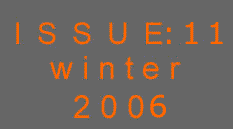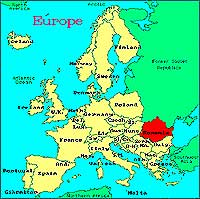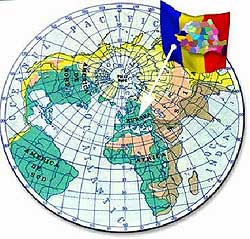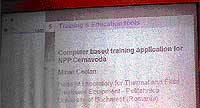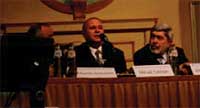
MODERNIZING ROMANIAN NUCLEAR EDUCATION AND TRAINING SYSTEMS
Mihail Ceclan
Programmes Department Head – Romanian Nuclear Society (AREN)
Romania, as a candidate country, is waiting for
the final report of the European Commission’s concerning
the achievement of integration criteria in April 2006.
The second round of EU expansion is scheduled
on January 1, 2007. However, the Romanian nuclear family has long
been ahead of that curve and has already been thinking and acting
European for several years.
Modernizing nuclear education and training systems
The emphasis put on modernizing Romanian nuclear
Education & Training (E&T) system was discussed during
a session dedicated to nuclear E&T at SIEN 2005 (International
Symposium on Nuclear Energy) – organized by AREN (Romanian
Nuclear Society) and ROMATOM (Romanian Atomic Forum).
In the context of improving nuclear E&T systems,
the Romanian National Consortium (RNC) for Training and Education
in Nuclear Sciences Platform (TENSP) was created. RNC is based
on a partnership between public and private sectors, bringing
together the most important stakeholders involved in Romanian
Nuclear Sciences E&T: 4 universities, 2 research institutes,
6 professional associations, 2 industrial companies and 2 NGOs,
being led by a Directory Council.
RNC is currently working to become a member of
EU networks & platforms as well as to participate in future
FP-7 projects.
In line with the European point of view regarding
the nuclear European Higher Education Area creation, several representatives
of RNC attended in November 2005 the ETRAP Conference, in Bussels.
ETRAP Conference aspects
An original software tool, the e-Learning platform
called CBTCenter, already implemented at the training facilities
of Cernavoda NPP, was presented.
The main features of CBTCenter are:
a) Internet/Intranet web application;
b) online reading;
c) learning activities assessment, class management;
d) communication facilities: e-mail, chat, forum;
e) system administration tool.
Creating the Knowledge Society Training System
According to the Lisbon strategy, Europe should
become "the most competitive and dynamic knowledge-based
economy in the world, capable of sustainable economic growth with
more and better jobs and greater social cohesion" by 2010.
This implies creating a Knowledge Society E&T
System. But what does that mean?
Essentially, it entails the transition from the traditional school
to the virtual school as one can see in table 1.
Table 1
Transition from traditional to virtual school
E&T features |
Traditional school |
Virtual school |
| Professor-student interaction |
face-to-face |
remote interaction |
Communication outside the classroom |
little to none |
Online |
| Course materials |
on paper |
electronic support- computer used for reading |
| Assessment type |
subjective |
objective - computer used for testing |
Certain features of the traditional school should
be changed or removed. For example, the main classroom actors
(the professor and the student) will no longer interact face-to-face
but rather remotely, through the computer.
The virtual school is a paperless school, the
course materials on paper being replaced by electronic documents.
This way, the computer becomes the main instrument supporting
learning. That’s why the Computer Based Training or e-Learning
concept was introduced.
For some time the two systems (traditional /
virtual) should continue to co-exist symbiotically.
In this stage of the process it is necessary to accelerate changes
according to the following priorities:
-
Developing a public-private partnership;
-
ICT integration in E&T
-
Creating the infrastructure for a Knowledge Society E&T
Systems
-
CBT courses and materials
-
Assessment of nuclear training needs and capabilities in
Romania
-
Recognition of competencies and diplomas in light of the
EU integration
Creating the infrastructure of Knowledge Society
E&T Systems
The most urgent task of modernizing Romanian
nuclear E&T systems is the achievement of a suitable infrastructure,
meaning: hardware infrastructure, e-Learning and CBT tools / CBT
courses and materials for at least high schools and universities.
CBT and e-Learning always mean two things: a
software platform and content authoring. Ideally a software platform
should be able to import any type of flat documentation and integrate
it into a structured database which keeps track of pedagogically
meaningful information like the student’s progress in studying
materials, test and quiz results etc. In the same time, the materials,
the study and the tests have to be organized around certain objectives
which play the role of guidelines during the entire educational
activity.
One of the successful Romanian products is CBTCenter
software platform, achieved at the Laboratory for Fluid Treatment
and Thermal Equipment, University Politehnica Bucharest.
Some examples of CBT courses which have been successfully integrated
into CBTCenter are shown in the table 2.
Table 2
Disciplines / (CBT objects) name
Pos. |
Course / CBT object |
1 |
“CBT Center” User Guide |
2 |
NPP emplacement acquaintance |
3 |
NPP- CANDU |
4 |
Work safety |
5 |
Chemical safety |
6 |
Thermodynamics |
A typical study screen of CBTCenter is shown
in figure 1. The first step a trainee has to do after registering
into platform is to become familiar with the new training environment,
as natural and enjoyable as possible for the new trainee. The
courses are structured around objectives and followed by an evaluation
test. The trainee is guided towards completing the objectives
and assimilating knowledge, by means of text, multimedia elements,
narration and quizzes (figure 1). The multimedia elements include
figures, flash animations, Java applets and MP3 sound files. All
these elements are synchronized for creating a useful and enjoyable
interaction.
Each of the actions the student performs during
the online study sessions is tracked to allow the instructor to
evaluate the student’s level of comprehension. The navigation
through the course complies with the current e-Learning and CBT
standards. It provides the overview of all documents all the time
through the dynamic menu on the left side of the screen. It is
important for a trainee not to get lost in the course so that
he keeps his level of interest and self-esteem at high levels.
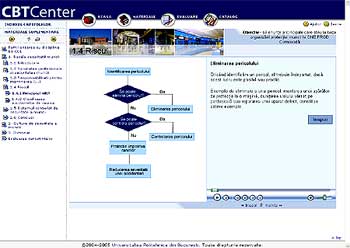
Figure 1: Typical CBTCenter study screen
Conclusions
The Romanian National Consortium (RNC) for Training
and Education in Nuclear Sciences Platform (TENSP) is an important
achievement of the year 2005 for the Romanian nuclear family and
definitely a helpful instrument for an easier EU joining of Romanian
stakeholders in E&T fields.
|

